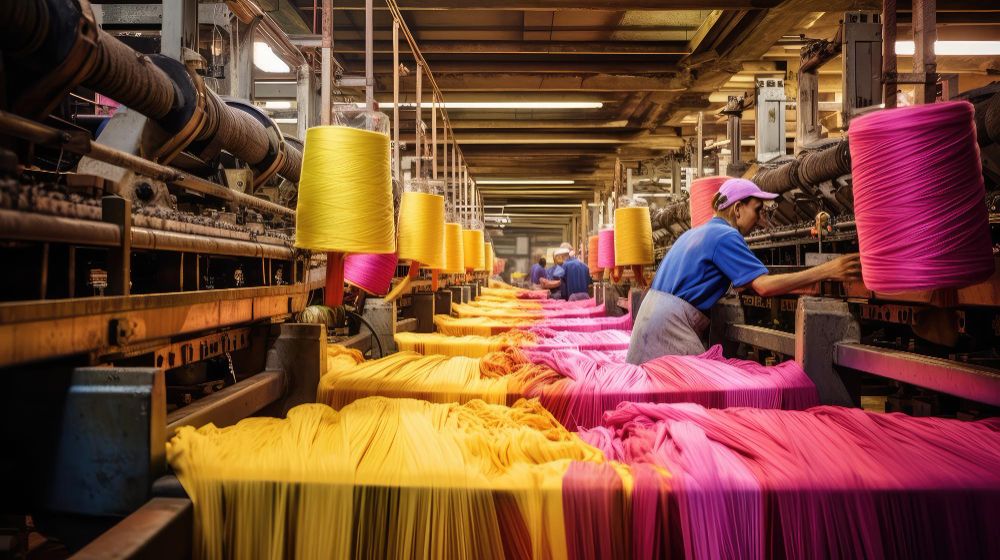Have you ever wondered how the world's leading fashion brands achieve both excellence and efficiency by venturing beyond their borders?
Embarking on the journey of overseas clothing manufacturing opens a gateway to a realm where creativity meets craftsmanship at a scale unimaginable within domestic confines. This voyage, fraught with both opportunity and complexity, requires a nuanced understanding of the global manufacturing landscape, strategic planning, and a steadfast commitment to quality and ethical practices.
Let's unravel the layers of this intricate process, guiding you through the essential steps to forging fruitful partnerships with manufacturers across the globe, thereby transforming your fashion brand into a global powerhouse.

The Global Manufacturing Tapestry
The global fashion industry is vast, with key players spanning continents. Countries like China, India, Bangladesh, Vietnam, and Turkey are often at the forefront of overseas manufacturing, each offering distinct advantages, from cost savings to unparalleled craftsmanship. The choice of manufacturer can significantly impact your brand’s quality, ethos, and bottom line.
Advantages of Going Global
- Cost-Effectiveness:
Perhaps the most compelling reason to source overseas is the potential for cost savings. Labor and material costs in countries like Bangladesh and Vietnam can be significantly lower than in Western counterparts, allowing for better margins or competitive pricing.
- Quality and Expertise:
Contrary to popular belief, overseas does not always mean lower quality. Many countries have centuries-old traditions in textiles, offering a level of craftsmanship that is hard to replicate elsewhere.
- Scalability:
With vast facilities and a ready workforce, overseas manufacturers can quickly scale up production to meet demand, a crucial advantage in the fast-paced fashion industry.
Navigating Challenges
Communication can be complicated by language barriers, cultural disparities, and time zone differences. Additionally, ensuring quality control and ethical production presents significant challenges, demanding a hands-on approach to maintain standards. Quality control and ethical production are also major concerns, necessitating a hands-on approach to ensure standards are met.

Choosing Your Manufacturing Partner
Identify Your Needs:
Clarity on your product type, quality standards, and production timelines is key. This step determines the direction of your search and the criteria for selecting a manufacturing partner.
Conduct Thorough Research:
Look for manufacturers with expertise in your product category and positive reviews from previous clients. Consider their production capacities, ethical standards, and willingness to communicate.
Sample and Communicate:
Before finalizing a partnership, request samples to assess quality. Open channels of communication are crucial for discussing expectations, adjustments, and improvements.
Visiting the Factory:
If feasible, visit the manufacturing site. This firsthand look can provide invaluable insights into their operations, work ethic, and the potential for a long-term partnership.

Best Practices for Success
- Maintain Open Communication:
Establish regular check-ins and be clear about your expectations. This helps in preemptively identifying and resolving issues.
- Implement Quality Control Measures:
Define quality standards from the outset and employ independent inspectors to ensure these are met throughout production.
- Understand Import Regulations:
Familiarize yourself with the import regulations of your country to avoid unexpected costs and legal issues.
Success Stories and Cautionary Tales
The landscape is filled with brands that have successfully leveraged overseas manufacturing to scale their operations and enhance their market presence. Learning from these successes—and the pitfalls encountered along the way—can offer valuable lessons in what to do and what to avoid.

The Future of Overseas Manufacturing
The global fashion industry is witnessing a rising significance placed on sustainability and ethical practices. Brands that prioritize these values in their international partnerships stand to resonate with an expanding cohort of mindful consumers, while also bolstering the industry's enduring health and reputation.
Conclusion
Navigating the complexities of overseas clothing manufacturing is no small feat. Achieving this necessitates a meticulous equilibrium between strategic planning, thorough research, and continuous management. However, the potential rewards—cost savings, access to specialized expertise, and scalability—make it a venture worth exploring for fashion brands aiming for global impact.
As the industry evolves, so too will the opportunities and challenges of overseas manufacturing. To forge successful international partnerships, it will be essential to remain well-informed, adaptable, and dedicated to ethical practices. Keep in mind, the objective isn't solely to locate a manufacturer, but rather to establish a collaborative partnership capable of expanding and evolving alongside your brand.

In this global journey, your brand's resilience, creativity, and vision for the future are paramount. Let these be your guiding stars as you navigate the vast and varied landscape of overseas manufacturing, towards a future where every stitch and seam is a testament to your brand's commitment to quality, innovation, and global collaboration. As you embark on this path, let Zyod be a subtle reminder of the potential that lies in thoughtful, informed exploration of the world's manufacturing capabilities. Here's to the stories you'll weave and the futures you'll fashion in the boundless world of global apparel production.






